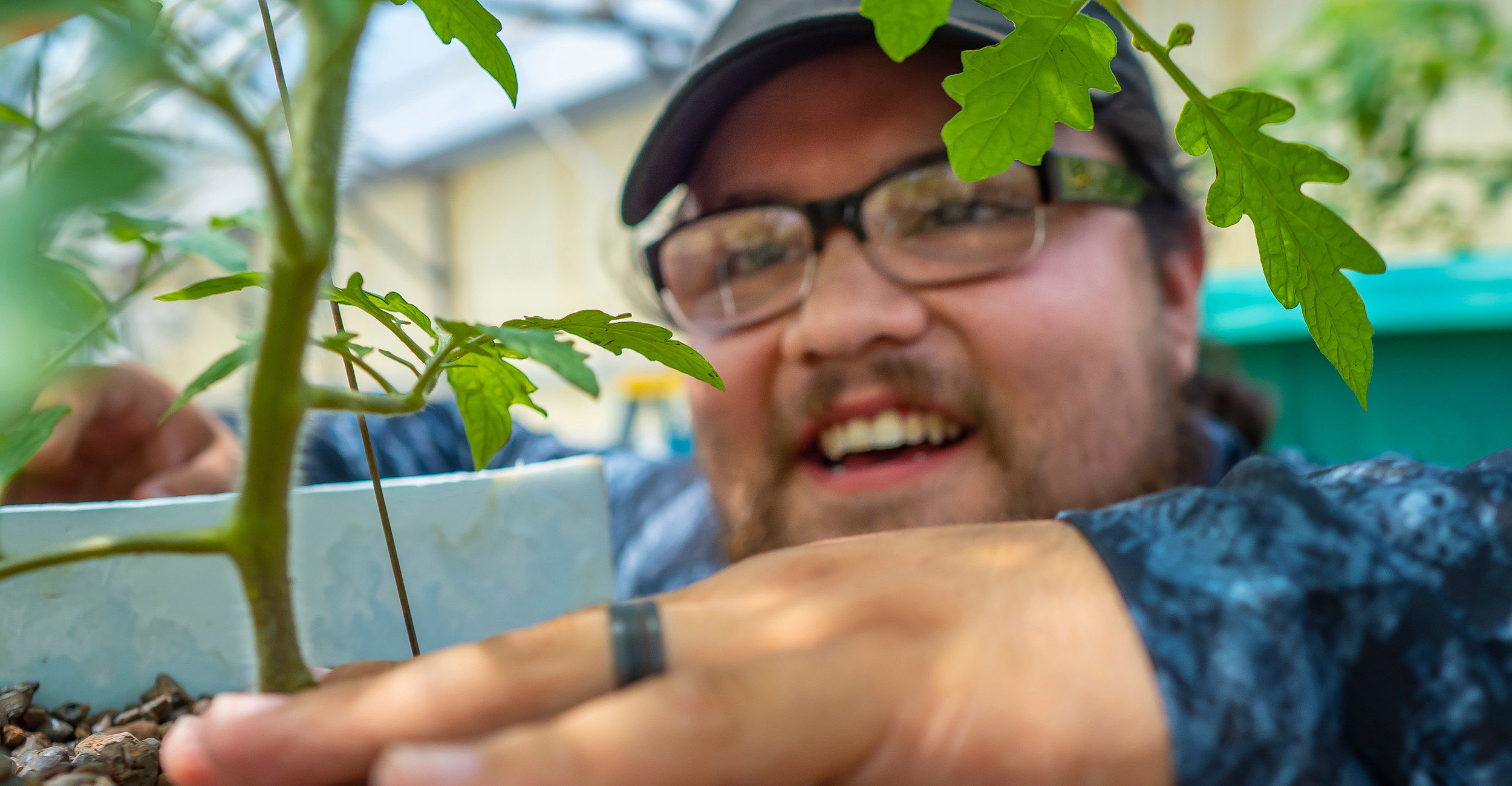
Graduate student first to use aquaponics with grafted plants
Wednesday, July 14, 2021
Media Contact: Alisa Boswell-Gore | Agricultural Communications Services | 405-744-7115 | alisa.gore@okstate.edu
An Oklahoma State University graduate student is changing the world one tomato at a time.
Che Deer, a master’s student in the OSU Department of Horticulture and Landscape Architecture, is conducting research with grafted plants in three different types of environments — outdoor, greenhouse and residential indoor.
Grafting is when the root system of one plant is combined with the scion (upper stem part) of other genetically compatible plants. This is to give the plant the vigor (healthy growth) and disease resistance of one plant’s roots while giving it the delicious tasting fruit of another.
“It’s taking the best of both worlds and putting them together,” said Deer, who combined the roots of pepper and tomato plants bred for high disease resistance and vigor with the top portion of tomato and pepper plants with good food quality but low disease resistance and yield. He also combined the root system of a squash with the scion of a watermelon plant.
Grafted plants take in nutrients more efficiently than non-grafted plants, which allows them to grow faster. This translates into higher yield and faster growth rates. Plants also typically do better in controlled system environments due to nutrient availability, climate regulation and other factors.
Deer’s research studies two areas: propagation, which refers to breeding plants by natural processesand production, or how well they develop and produce.
“In the propagation study, the goal is to test what the ideal environmental conditions are to enable the plants to heal, and Che has had a very high success rate,” said Bizhen Hu, assistant professor of horticulture and Deer’s thesis adviser.
Grafted peppers usually have an 80% or better survival rate, but Deer’s indoor and greenhouse treatments have shown a 100% survival rate while his outdoor treatment has had a 96.6% survival rate. Grafted watermelons traditionally have a 60% to 70% survival rate, but Deer’s watermelons have had a 90% to 100% survival rate. His tomatoes are also experiencing a high survival rate and minimal signs of stress, such as wilting, decay, early flowering or the root stalk growing its own shoots.
“We’re looking for ways to minimize resources and make the most out of what we have,” Deer said. “If we can do that through grafting and controlled system agriculture, then I believe this research is going to make a difference for commercial producers, home growers and Extension and high schools.”
Another goal of this Agriculture Research is commercializing the heirloom variety Cherokee purple tomato, a highly sought-after plant due to its high quality in size, appearance and taste, but it has two downfalls: low yield and lack of disease resistance. By grafting, Deer and Hu are making the tomato disease-resistant and vigorous.
Deer also has a bachelor’s degree in fisheries and aquatic ecology from OSU. He said he wants to use controlled system agriculture and his knowledge of fisheries and horticulture to help people.
“Growing up in tribal territory, I remember not having the best access to clean and healthy food. We ate government commodities, which are not the best for you. Where I grew up, there are elevated rates of heart disease and diabetes, and most people don’t live past 50 to 65,” said Deer, who is part of the Kickapoo Nation and grew up in Red Rock.
“Once I got out into the world, I didn’t know what I wanted to do, but I knew I wanted to help people. The Center for Sovereign Nations brought issues like food sovereignty to my attention,” he said. “Without them and their leadership, I wouldn't be in this program. I don’t necessarily know where I’m going to be two years from now, but I do know that it’s going to be helping someone.”
